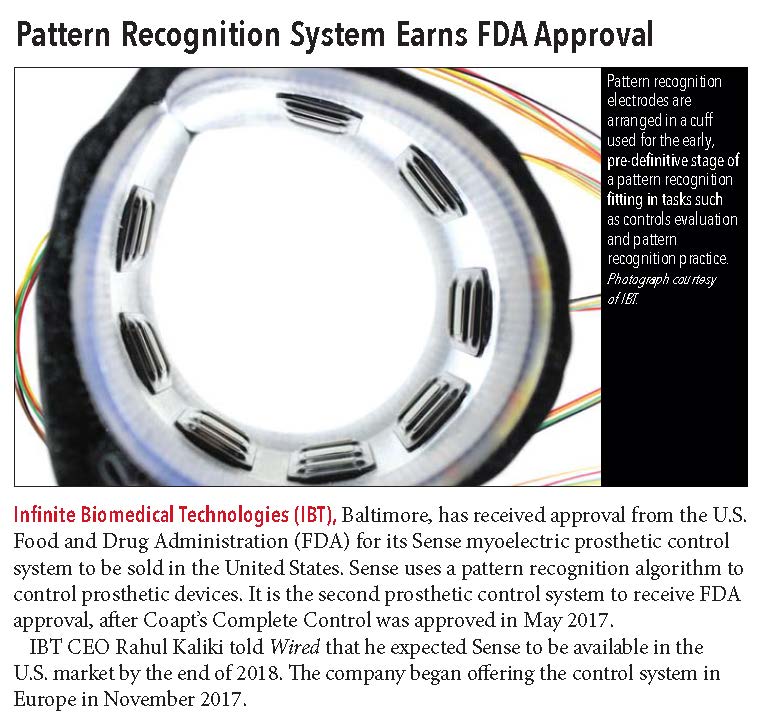Dr. Andrew Rubin at Dankmeyer, with his mother and Luca the Goldendoodle.
This is the second part of a two part story, which begins with Dr. Andrew Rubin’s contribution. In October 2018, Dr. Rubin was featured in an article in Wired, a technology magazine, describing his work with Infinite Biomedical Technologies (IBT). (You can read the Wired article by clicking here.) IBT has been working with Dr. Rubin on a new system that could be used to control prosthetic devices. Megan Hodgson from IBT has provided us with a summary of the technology used on his upper limb prosthesis.
Infinite Biomedical Technologies (IBT), located in the heart of the Inner Harbor, Baltimore, has been developing solutions to improve the care and capabilities of people with upper limb difference since 2011. The Sense system, a pattern recognition-based arm prosthesis controller for electric arms, is one such solution. Instead of the standard control methods, which have been around since the 1960s and limit the user to two inputs, the Sense system uses eight inputs to gather information from all of the muscles in the limb as they contract. It is more intuitive, as users imagine their phantom limb moving, the sensors record the muscle activity, and the prosthesis responds to what the user is trying to do.
Not only does this have the potential to allow users to access more degrees of freedom in a prosthesis, it opens doors to patients for whom standard myoelectric control was thought to be unsuitable. Dankmeyer and IBT have worked together to develop these technologies and make sure that they are suitable for the clinic, and Dankmeyer has previously created incredibly well-fitting sockets and beautiful arms for past projects. The current collaboration is for an arm fitting for Dr. Andrew Rubin. Due to the nature of the amputation, Dr. Rubin has difficulty creating two distinct signals to activate the open and close signals on his limb. With the Sense technology, these signal patterns, known as cross-talk, are useful and even desired. Using pattern recognition virtual training technology, he has already achieved more movements with a virtual limb than he has been able to with his current prosthesis and is looking forward to getting a permanent prosthesis with the Sense technology. - Megan Hodgson
Photo Credits: Megan Hodgson, IBT.
Dr. Rubin is not the only Dankmeyer patient that has worked with IBT. George Levay appears in our News from July of 2017, which you can read by clicking here.





